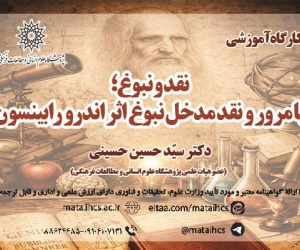تحلیل مفهومی «ساز موسیقایی» (مقاله علمی وزارت علوم)
درجه علمی: نشریه علمی (وزارت علوم)
آرشیو
چکیده
با وجود اهمیتی که مسئله تعریف ساز موسیقایی در حوزه موسیقی شناسی برای دیگر مسائل نظری و عملی موسیقی دارد، تعاریف موجود و معیار، مثل هورن باستل (1933)، بیِلاویسکی (1979) و لیسلاف-متسن (1985)، دست کم از حیث منطقی بعضی از الزامات تعریف، مثل تعیین طبقه وجودشناختی موضوع (یا معرَف) و مانع بودن، را برآورده نمی کنند. مقاله حاضر، به این مسئله که ساز موسیقایی چیست می پردازد، با هدف ارائه تعریفی از این مفهوم که همه الزامات منطقی تعریف را برآورده کند. بدین منظور در این مقاله روش کیفیِ تحلیل منطقی یا مفهومی اتخاذ شده است، که از روش های اصلی علوم قیاسی و مهم ترین روش در تعریف مفاهیم علمی است. این مقاله از طریق سلسله ای از تحلیل ها اقدام به تعیین هر یک از معرِف های منطقی ساز می کند. در تحلیل اول مشخص می کند که ساز از حیث وجودشناسی به طبقه مصنوع فنی و به عبارت دقیق تر سیستم فنی تعلق دارد. در تحلیل دوم و سوم، هر یک از فصل ممیزهای ساز مشخص می گردد که عبارت اند از دو دسته ویژگی کارکردی و ناظر به طرح (یا ساختاری) ساز. این دو تحلیل به طور دقیقی، به ترتیب، بر اساس نظریه ICE و نظریه مدل سازی کارکردی صورت می گیرد و در آخر به یک فرمول بندی منطقی از تعریف ساز منتج می شود.A Conceptual Analysis of Musical Instrument
Despite the importance of the definition of ‘musical instrument’ for theoretical and practical issues in the field of musicology (such as classification, orchestration, and education), the available definitions such as those offered by Von Hornbostel (1933), Lysloff and Matson (1985), and Bielawiski (1979), seem to be flawed, since they lack some of the logical requirements that a standard definition should meet. Specifically, these definitions need to be revised and reformed as they are not exclusive and do not clearly indicate what the most general ontological kind, class, or category of the objects ‘musical instrument’ belongs to. The present article, thus, deals with the issue of what a ‘musical instrument’ is, and it aims to provide a comprehensive definition of musical instrument, meeting all the logical requirements of a standard definition. To this end, the qualitative method of logical or conceptual analysis is used, as one of the main methods of deductive sciences and one of the most important methods of defining scientific concepts. The article also introduces the defining elements of ‘musical instrument’ through sequential analyses. In the first analysis, ‘musical instrument’ is ontologically recognized as an object of a technical system. In the second and third analyses, each of the specific differences distinguishing it from the other technical systems is identified: functional properties and design (or structural) properties. These two analyses are performed based on the 2003 version of the ICE-theory of functions, considering the multiple user roles and the functional modeling theory, respectively. Finally, a standard definition is formulated using conceptual analysis. According to this definition, a musical instrument features the following three characteristics. (1) With respect to its ontological kind, it is a technical artifact of a specified technical system. (2) With respect to its function, according to the justifiable belief of the composer, it has the capacity to produce sound with certain pitch and timbre in accordance with a particular aesthetic experience and function for the composition as a whole and its effect on the listener. According to the justifiable belief of the performer, it has the ability to transform scripts into sound with certain pitch and timbre. And, in the case of the listener, it has the ability to create aesthetic experience by producing sounds with certain pitch and timbre. In addition, a musical instrument has the capacity to produce sound with certain pitch and timbre as its proper function is taken into account by d-agents; it is also constantly (i.e., not as an exception, for trial, or fun) used by u-agents as an instrument with the above capability by u-agents. In other words, some pieces are made or arranged by the composer, some other pieces are performed by the performer, the way of working with it (its use plan) is taught, and the sounds produced by it are recognized as distinct with appropriate aesthetic properties by the listener. (3) And finally, with respect to its structure, a musical instrument is a given normal configuration that consists of an energy element, control element, and sound element.









